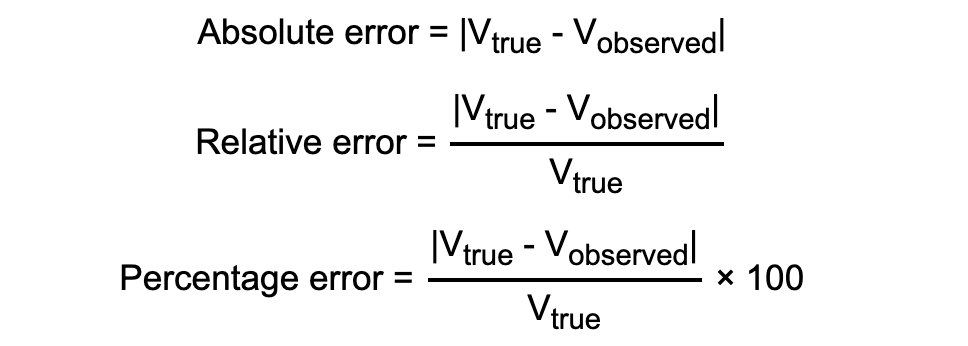How to Calculate Percent Error | A Simple Step By Step Guide
Do you know what percent error is and why it is being used? Well, percent error is often used in science to report the difference between a measured or experimental value and a real or exact value.
Typically, the percent error represents the percentage of the difference between the approximate or measured value and exact or known value. Let’s take a look at how you can calculate it using our simple step by step guide.
Definition of Percent Error
In math, the percent error indicates the accuracy of a measurement. And as you probably can already tell, percent error is a type of calculation error. As such, it is part of an overall error analysis that also includes the absolute and relative error. But what exactly is the percent error?
Well, in short, this percent expresses the difference between a measured value and the known or accepted value. Typically, in science, the error calculation method is used with one sole purpose – to estimate how close the measured value is to a true value.
Further, to get an overall error analysis, you would need the percentage error. However, you would also need absolute and relative error as they are part of the calculation.
Moreover, to understand how to calculate a percentage error successfully, it is first fundamental to understand what an absolute error and a relative error are since the percentage error is derived from these terms. So, let’s take a quick look at what an absolute and relative error is.
Absolute Error and Relative Error
As we have already mentioned, to calculate the percent error, we need to know two other values. First, you will need to know how to calculate the absolute error. Typically, this error represents the difference between an experimental and known value.
On the other hand, the second value you would need is the relative error value. So, after you have the absolute error, you should divide that number by the known value. By doing so, you will get the relative error. And as you already know, if you multiply the relative error by 100%, you will receive the percent error.

Negative Percent Error Value
Before we continue, it is essential to note that, in some cases, the percent error might also represent a negative value. Usually, in most areas, the results must always be a positive value.
However, in rare cases, the obtained result must be corrected to have either a positive or a negative value. For example, in chemistry and other fields of science, a negative value is preferred.
Moreover, scientists and physicians know how important the sign of the error is – whether it is positive or negative. For instance, if you compare actual to theoretical yield in a chemical reaction, you should not expect to have a positive percent error.
Furthermore, physicians know that if you get a positive value, it would suggest that there are potential problems with the procedure or even unaccounted reactions. Here’s how the formula will look if you need to keep the sign for percent error.

Step By Step Guide
So, as we mentioned above, the error rate calculation shows the difference between the experimental and theoretical values. Then, the results must be multiplied by 100 to obtain the percentage. Let’s take a look at the following simple step-by-step guide that will help you calculate the percent error.
- The first thing you need to do is to subtract the accepted value from the experimental value. Or, in short, subtract one value from another.
Note: Ignore any minus sign.
- Then, take the absolute value you got as a result of step 1.
- Now, you must divide that answer by the exact or ideal value. Be careful; don’t use your experimental or measured value.
Note: As you will yield a decimal number, you have to convert it into a percentage.
- So, lastly, you have to multiply that answer by 100.
Note: Don’t forget to add the % symbol to express the answer as a percentage.





